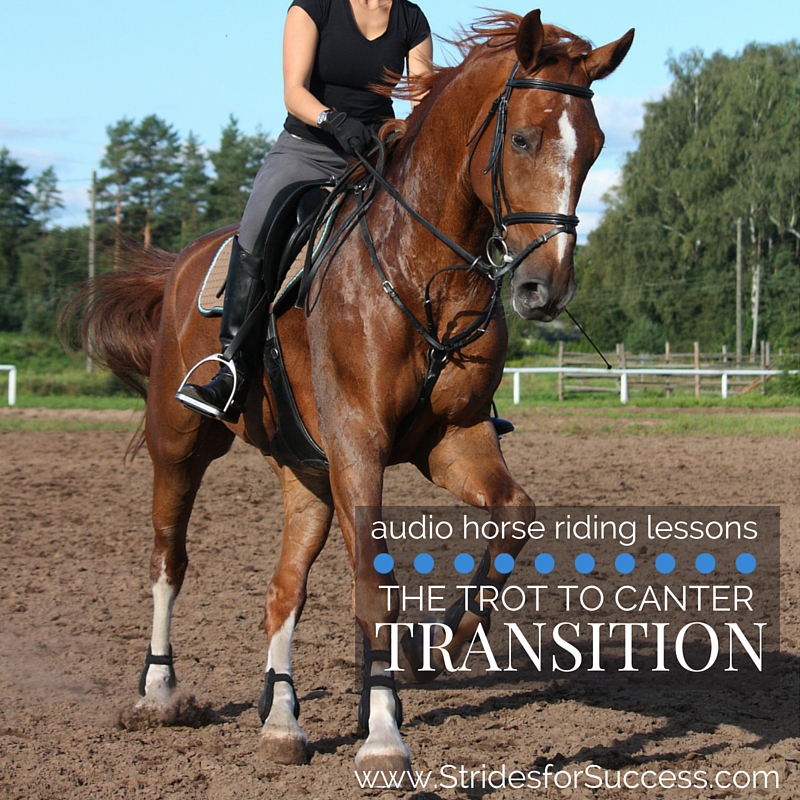Do you manage to perform a ‘clean’ trot to canter transition every time? This transition is often one of the most difficult to maintain balance and rhythm. And this is true for both horse and rider.
The potential for your horse to run into the canter, instead of actually ‘striking’ the canter when asked is quite high.
In this episode of the Daily Strides Podcast, we cover an exercise that will help you become more clear with giving your horse the aids to canter. It will also help to place your horse into a situation where he can transition from trot to canter more easily.
Perfect this Transition?
I want you to begin by riding a 20-meter circle, paying close attention to the quality of your trot. Make sure you have a nice, active working trot; your horse moving forward from your leg.
As you are trotting, notice how responsive your horse is to your aids…
Are you having to ask two or three times for a specific movement or response? Use the initial trot on the circle to secure your horse’s undivided attention. And to develop his willingness to do as you ask.
Riding a Smaller Circle
Once you have the trot moving forward as you want it, begin gradually leg yielding on to a smaller circle. I say slowly, as I would like you to do this over a few rotations of the circle. Continue to decrease the size until you are eventually riding an approximately 12m circle.
Again, spend some time here re-balancing and establishing an active trot. Pay close attention to your position. Don’t lean or tip forward onto your horses neck. I also want you to be mindful of your aids. Are your legs where they should be? Are you asking the right questions?
Trot to Canter Transition
After 3 to 4 circuits of the smaller circle, you can begin leg yielding back out to your original bigger circle. This is where you will ask for the trot to canter transition. It is an ideal place to ask as firstly your horse is naturally flexed correctly. And secondly, you are using a strong inside leg, riding into your outside rein, which you will use to balance the actual transition and the canter itself.
As you near the ‘outside’ circle again, I want you to have a quick check of your position and after half halting your horse, you can ask for the canter.
If your horse ‘runs’, bring him back, re-balance the trot, and then try again. If your horse transitions into the canter, but then breaks back to trot after only two or three strides, you know that your inside leg is not being used effectively.
You can continue this exercise a few times, paying attention to what you are asking, how you are asking and how your horse responds. From there, you can try the trot to canter transition on the circle alone and see how you get on.
Happy Riding
Lorna


1 Comment